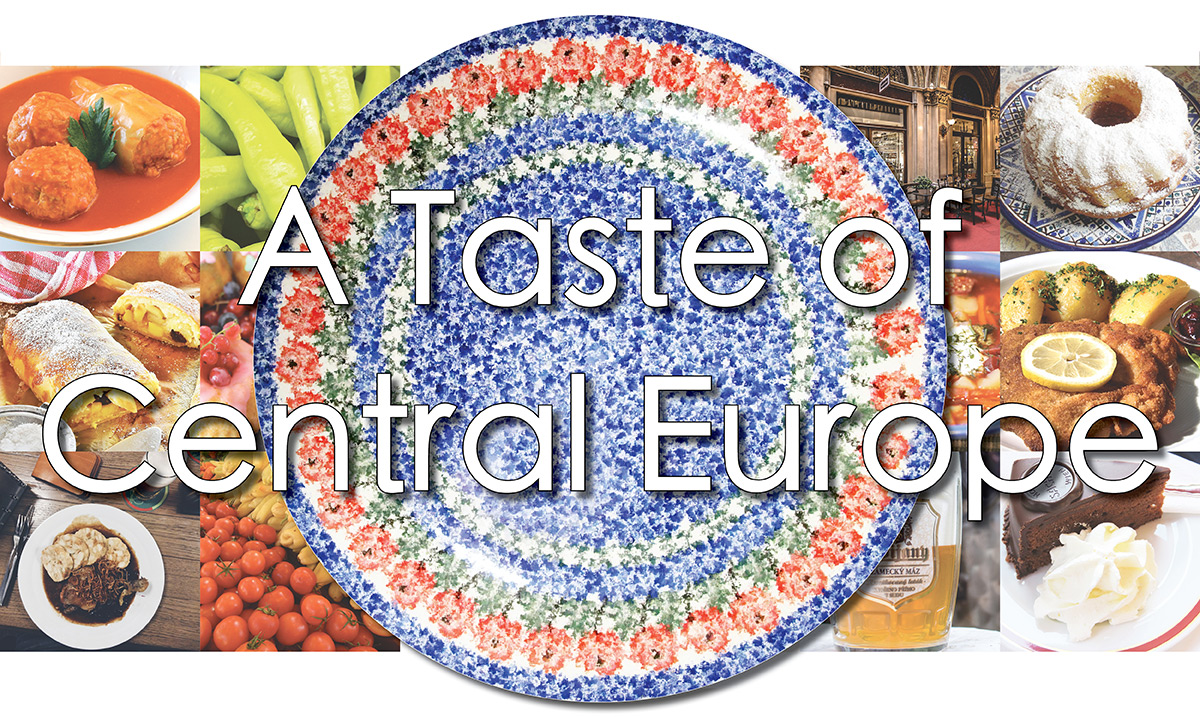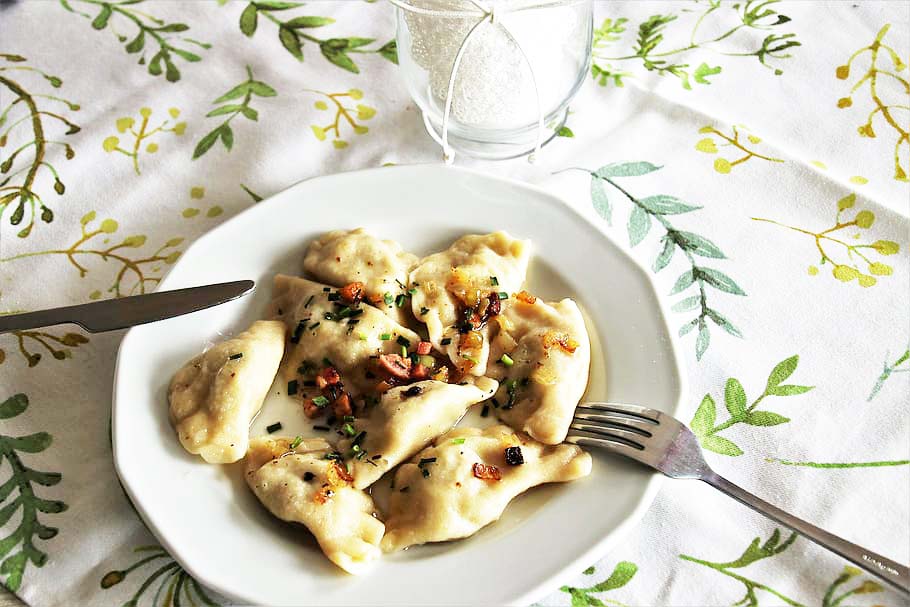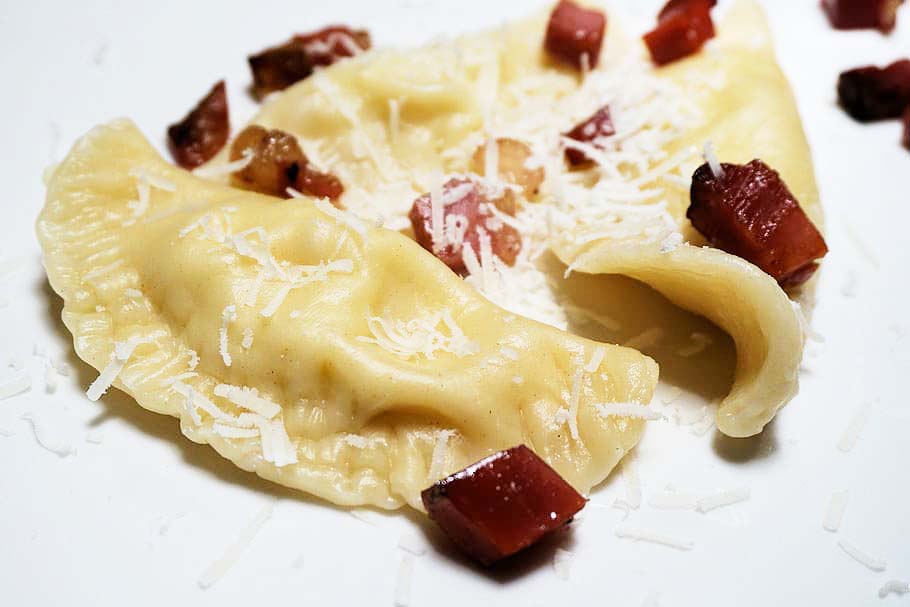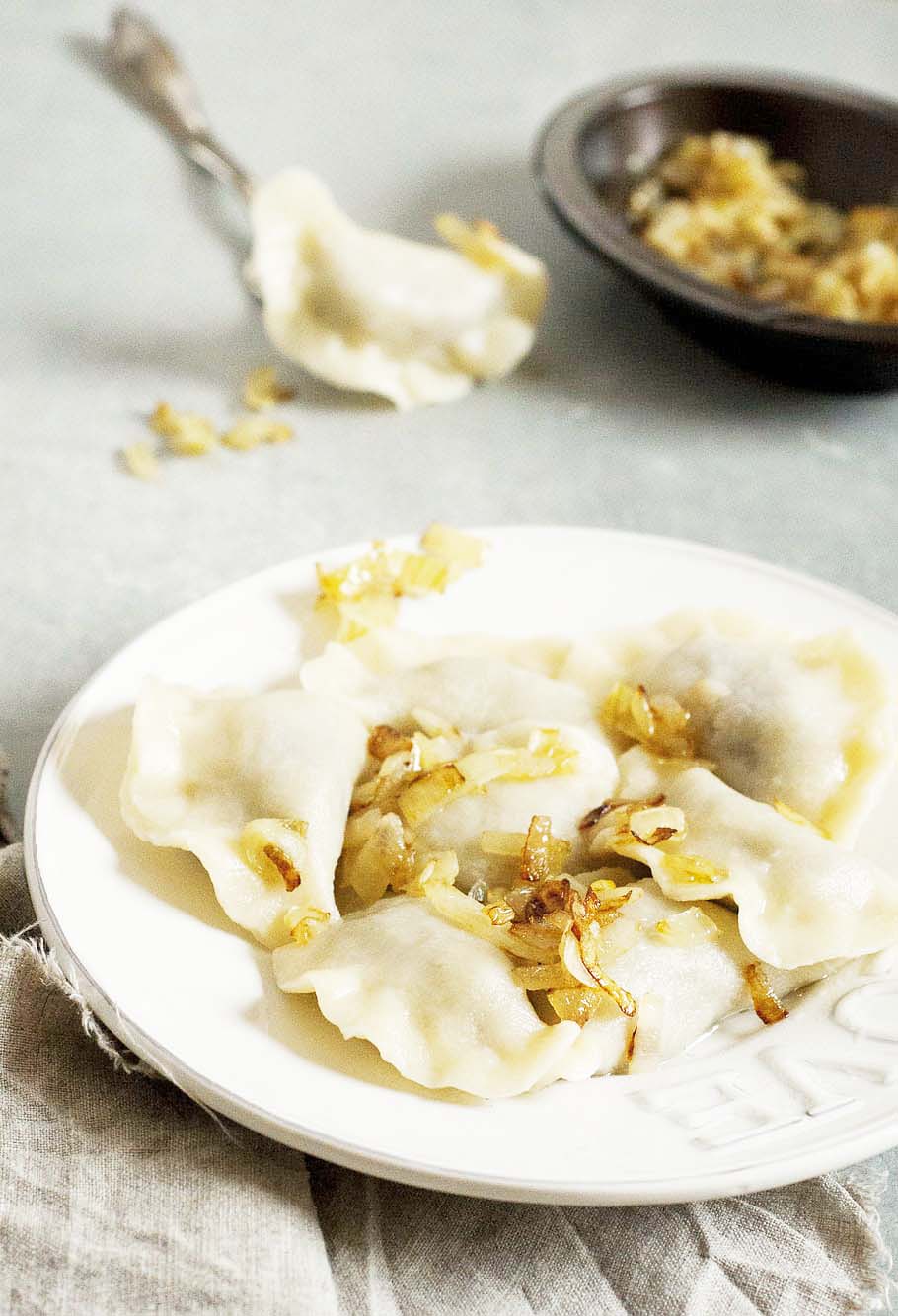Food icons of the region - part 2: Famous dishes continued

After last week’s ode to the glorious and decidedly non-vegetarian schnitzel, this week we explore another famous Central European dish that is as iconic as it is delightfully simple: the dumpling. It is also vegetarian/vegan friendly depending on what sumptuous filling you decide to tuck inside.
For this instalment, we are going to focus on the king of all dumplings, the pierogi! Produced by the dozens, nay hundreds, by the loving hands of babcias everywhere, no doubt this doughy delight is already well known and much loved by many of our Albertan readers — that is, if the Giant Pierogi statue of Glendon, AB is anything to go by! This delightful dish consists of pillowy parcels of tender dough encasing a savoury — or sweet — filling. Savoury versions rely on fluffy mounds of mashed potato, flavoured with everything from sautéed onions and cabbage, to mushrooms, or cheese — and sometimes all three because more is more, right? Meat-lovers rejoice at the addition of bacon or ground meat. Sweet versions include fruit fillings, like ripe juicy blueberries, dried fruit and jam, or sweetened cheese fillings scented with vanilla. So versatile, it’s a perfect dish for an appetizer, main course, or dessert and so beloved, pierogi festivals are held all over the world — from Krakow to Pittsburgh to Montreal! There are even entire restaurants devoted to the big little dumpling. If you are ever lucky enough to find yourself in the vibrant city of Wrocław, you might want to pay a visit to the Pierogarnia Stary Mlyn — trust us!
 While the origin story of the pierogi is subject to debate, you would be correct to assume that the perfect accompaniment for such a dish includes a side of myth and legend — along with several dollops of sour cream and fried onion, of course. It is believed that the first perfect parcel of potato and dough came to be somewhere in Central or Eastern Europe, long before the national boundaries that demarcate the region we know today even existed. Alas, the small but mighty pierogi is impervious to maps and charters and has ascended to a plate, er, place of prominence in nearly every country and kitchen of the region. But to return to its backstory, and to stake Poland’s claim in the pierogi game, legend has it that in the year 1238, Hyancinth of Poland — a Polish Dominican priest and missionary — paid a visit to Kościelec, high in the Tatra mountains. On the occasion of his visit, a terrible storm blew through, razing all of the wheat crops to the ground. Naturally, Hyacinth advised the distraught villagers to pray with all their might and, wouldn’t you know it, the very next day the crops had miraculously bounced back in abundance! As a token of their profound gratitude, the people of the village milled the crops into flour with which to make a feast of pierogis to thank Saint Hyacinth. If you prefer a version with a little more action, another tale professes that it was actually Hyacinth himself that fed starving villagers with pierogi during a terrible famine that had been caused by an invasion of fearsome Tatars. Now, neither of these legends have been verified by scientific evidence, but they do make for great stories to tell while mixing, rolling, cutting, and stuffing dough.
While the origin story of the pierogi is subject to debate, you would be correct to assume that the perfect accompaniment for such a dish includes a side of myth and legend — along with several dollops of sour cream and fried onion, of course. It is believed that the first perfect parcel of potato and dough came to be somewhere in Central or Eastern Europe, long before the national boundaries that demarcate the region we know today even existed. Alas, the small but mighty pierogi is impervious to maps and charters and has ascended to a plate, er, place of prominence in nearly every country and kitchen of the region. But to return to its backstory, and to stake Poland’s claim in the pierogi game, legend has it that in the year 1238, Hyancinth of Poland — a Polish Dominican priest and missionary — paid a visit to Kościelec, high in the Tatra mountains. On the occasion of his visit, a terrible storm blew through, razing all of the wheat crops to the ground. Naturally, Hyacinth advised the distraught villagers to pray with all their might and, wouldn’t you know it, the very next day the crops had miraculously bounced back in abundance! As a token of their profound gratitude, the people of the village milled the crops into flour with which to make a feast of pierogis to thank Saint Hyacinth. If you prefer a version with a little more action, another tale professes that it was actually Hyacinth himself that fed starving villagers with pierogi during a terrible famine that had been caused by an invasion of fearsome Tatars. Now, neither of these legends have been verified by scientific evidence, but they do make for great stories to tell while mixing, rolling, cutting, and stuffing dough.

On that note, we now turn our attention to how to make the perfect pierogi. As with most of the best things in life, pierogis really are a simple affair — at least when it comes to the fundamental building blocks: flour, water, and salt. The dough is made by mixing flour and warm water together. To make the dough a bit lighter and tangier, you might want to add a little sour cream to the mix; to make it a bit richer, add an egg. If you live in a particularly dry or humid climate, you might need to add a little more water or a little less. Once all the ingredients are mixed, it’s time to use your hands! Knead the dough until it is firm, then cover and give it a rest (we mean the dough, but you can take a break, too). It is important to give the dough a chance to relax to allow the gluten in the flour to develop which will make rolling out the dough much easier. It also allows you time to make that delicious filling! The great thing about pierogi dough is that it can keep refrigerated for a few days if you want to do a bit of prep work in advance. When the dough has sufficiently rested, it’s time to roll, cut, fill, and cook the pierogis! You will need to roll the dough out to about 1/8” thickness and, using either a circular cookie cutter or a water glass, cut the dough into as many rounds as possible. Once all your dough is portioned, place a neat scoop of your chosen filling, rounded into a ball, in the centre of your dough circle. Holding the dough in your hand, gently fold the dough over the filling and pinch the edges of the dough securely to form it into a well-sealed half-moon shape. Congratulations! You’ve just made your first pierogi! Now repeat until you have all the delicious dumplings you desire.

To cook your pierogis, you have a couple of options. The first option is to simply place your pierogis in a large pot of boiling water, cooking in batches until the dumplings float to the top. Once they rise, let them continue to cook for about a minute more before transferring them to a bowl or platter with a healthy drizzle of melted butter (preferably browned butter). This helps keep them from sticking and, let’s face it, makes them taste even more delicious. If you can stop yourself from devouring them just as they are, you can also take the tasty factor up a notch by frying the cooked pierogis in — you guessed it — butter! Sauté them on both sides until they are golden brown and crispy. To serve, include dollops of sour cream, fried onions, chopped green onions, bacon bits, and or sautéed mushrooms. For a sweet version, we would suggest a dusting of powdered sugar, mounds of whipped cream, chocolate shavings, or fruit compote.
Lastly, if you don’t happen to have a Polish grandma to consult, not to worry. We know someone with unimpeachable pierogi prowess — cookbook author and culinary mogul, Ms. Martha Stewart! Not only does Martha know her way around a kitchen, she also happens to have not one, but two Polish grandmothers in her family line so you can rest assured her method is babcia-approved.
Check out this vintage video of Martha and her mother, Big Martha, making traditional Polish pierogis and watch the magic happen:
For more sweet, savoury, and even veggie-friendly pierogi recipes, see our companion recipes and get cooking! Smacznego!
Companion Recipes

Basic recipe:
https://www.marthastewart.com/343884/basic-pierogi
Sweet:
http://mypolishkitchen.co.uk/recipes/polish-sweet/recipe-blueberry-pierogi/
https://www.thespruceeats.com/sweet-cheese-pierogi-filling-recipe-1136824
https://www.marthastewart.com/259413/pierogi-with-italian-plum-filling-and-sp
Savoury:
https://www.marthastewart.com/344596/pierogi-with-potato-filling-and-brown-bu
https://www.marthastewart.com/330216/pierogi-with-cabbage-filling-and-clarifi
https://www.thespruceeats.com/polish-sauerkraut-mushroom-pierogi-recipe-1137065
https://www.epicurious.com/recipes/food/views/wild-mushroom-pierogies-104635
https://www.foodandwine.com/recipes/potato-and-bacon-pierogi-thyme-butter